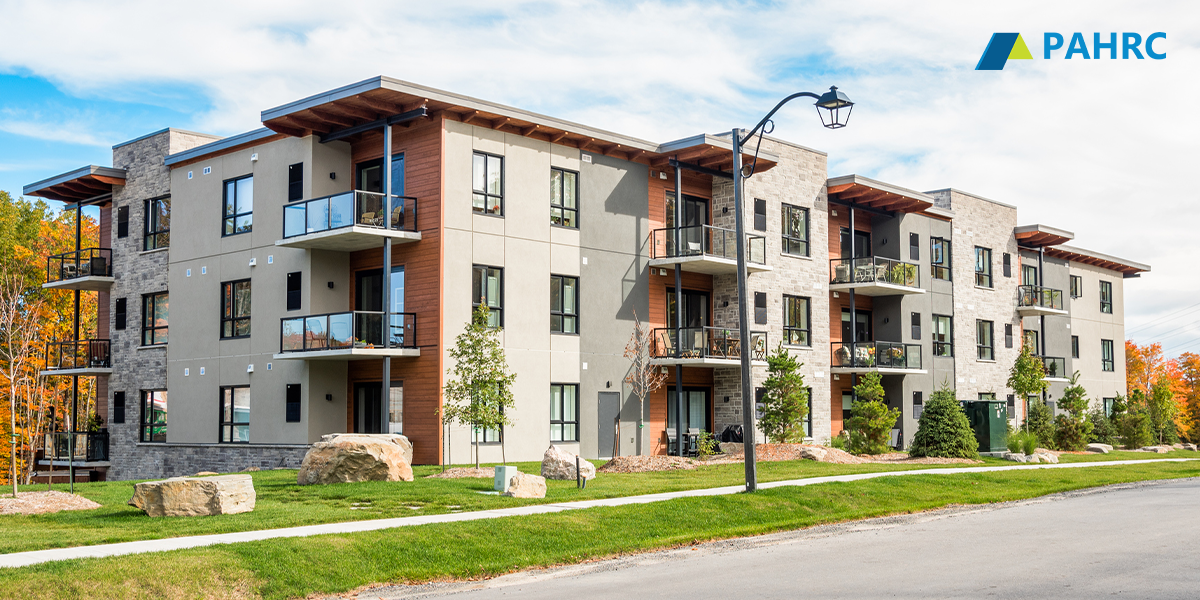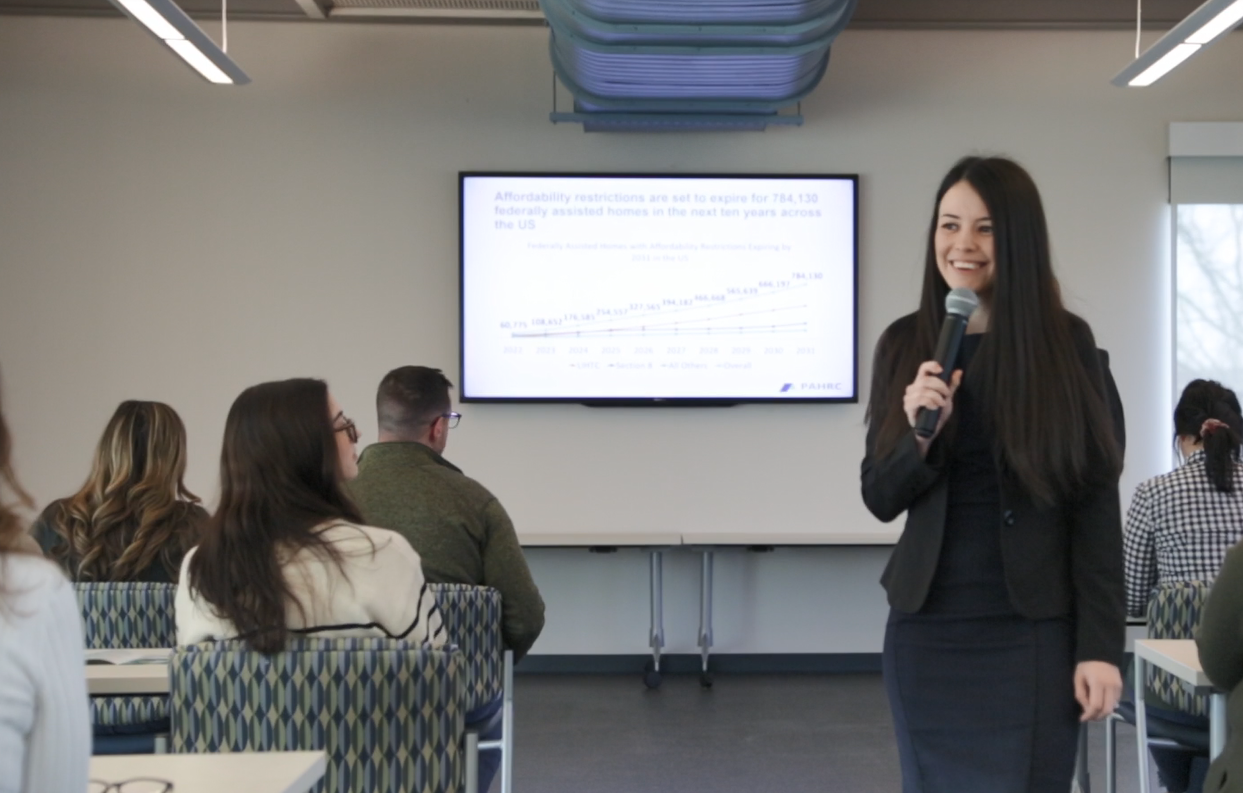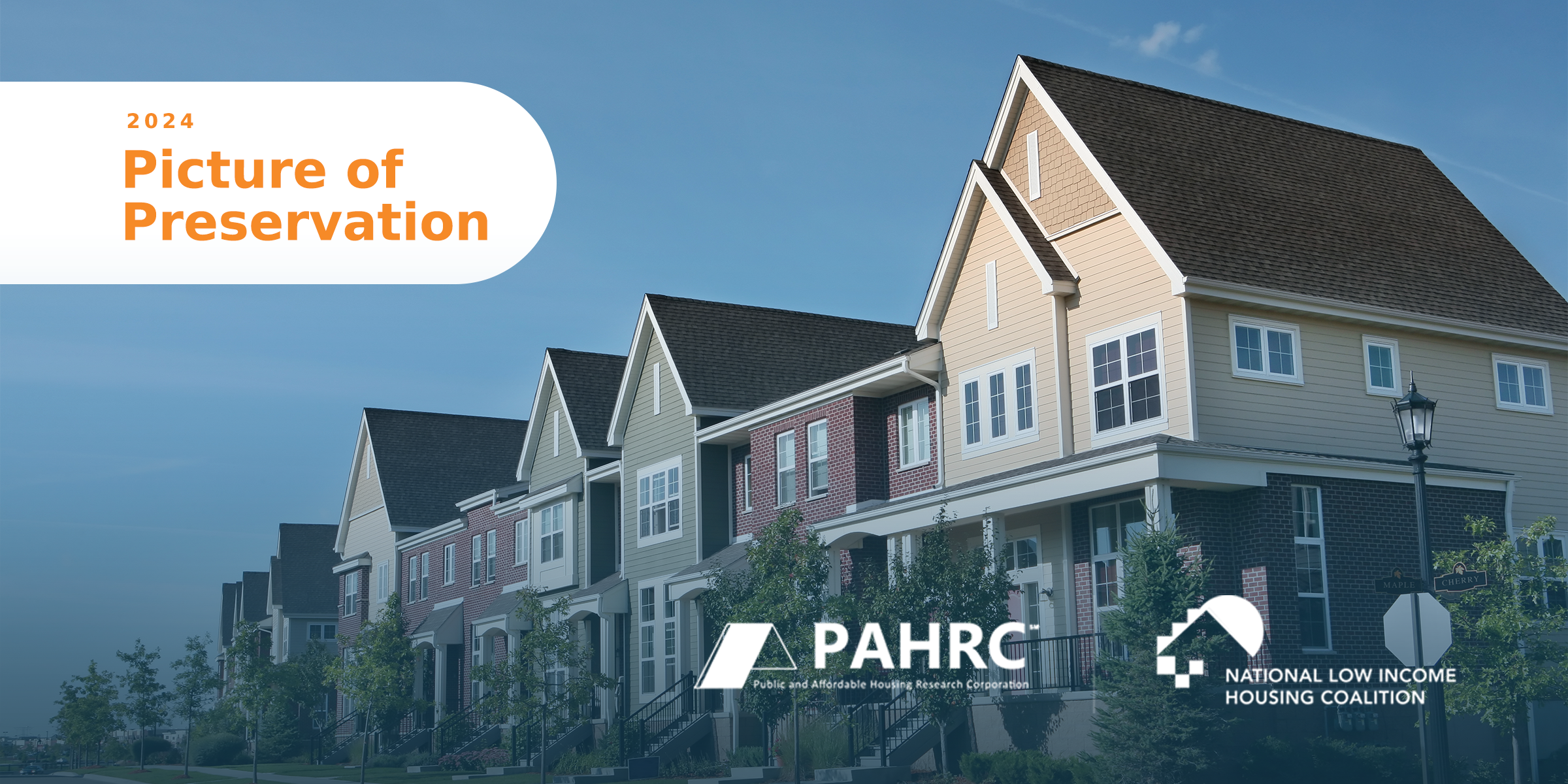Research and data are powerful tools for affordable housing organizations. They can help replicate proven programs, enhance advocacy, strengthen grant proposals, and inform strategic planning.
The Public and Affordable Housing Research Corporation (PAHRC), HAI Group’s research division, highlights affordable homes' value, outcomes, and impact. At our recent virtual event, Affordable Housing Insights, PAHRC's research team shared practical ways housing organizations can apply our research and data tools and insights to further their mission.
Locate affordable homes to acquire and preserve
Affordable rental homes require ongoing investment to remain in good condition and continue to serve communities, especially as properties age and affordability restrictions expire. With 374,497 homes facing the upcoming expiration of their affordability restrictions, many organizations are acquiring and reinvesting in these properties to ensure they remain affordable. Not only is preserving these homes cost-effective—often 25–50% less than building new affordable homes—but it also safeguards families and stabilizes communities.
The National Housing Preservation Database (NHPD) offers a nationwide deduplicated inventory of affordable rental properties that you can use to find properties to acquire and preserve in your community. Over 16,000 people have used this data to assess their local affordable housing stock and advocate for the preservation of affordable housing. The NHPD includes information about each property's location, funding characteristics, award dates, affordability restriction expirations, target tenant type, bedroom unit mix, and more.
To further guide investment decisions, PAHRC's Neighborhood Opportunity Search Tool can help you locate properties in neighborhoods that promote economic independence by providing access to education, employment, opportunities, and a strong health outlook. You can use the NHPD Mapping Tool to help Housing Choice Voucher holders or households on your waiting list find other affordable rental properties in your community. For more guidance, access our tutorial: Navigating Affordable Housing Research Using the NHPD.

The interface of the NHPD Mapping Tool to locate a property of interest in New Haven, Connecticut.
Replicate innovative policies and programs that help residents thrive
Providing housing is often just the beginning—many affordable housing organizations go further by implementing initiatives to improve residents' health, education, and financial stability. In fact, half of the public housing authorities (PHAs) surveyed by PAHRC and the Council of Large Public Housing Authorities (CLPHA) have also implemented cross-sector partnerships to improve health and education outcomes.
If you want to develop or expand cross-sector partnerships to help your residents thrive, PAHRC's research features case studies and a roadmap for affordable housing providers to replicate innovative programs that include practical tips for developing partnerships to improve health outcomes and economic mobility for underserved and underrepresented populations. Initiatives featured include policies, programs, and practices. These range from Biddeford Housing Authority's revitalization of the St. Andre's Parish Church complex into affordable housing and a community center to Akron Metropolitan Housing Authority's Full-Term First Birthday program, which aims to reduce infant mortality by providing expectant parents with housing stability and supportive services. These case studies offer actionable insights for developing or expanding partnerships that improve residents' quality of life.

Inform your strategic plan and grant proposals
In addition to shedding light on effective programs, you can use data to evaluate housing conditions, trends, needs, and disparities. These analyses can inform your organization's strategic plan and strengthen grant proposals to make your vision a reality. For instance, organizations applying for HUD's Choice Neighborhood Grant must collect data to assess local housing needs, conditions, and neighborhood poverty, assets, and amenities to inform their redevelopment plan. Additionally, many state housing finance agencies award points for Low-Income Housing Tax Credit property applications in areas that provide access to high-opportunity neighborhoods, strong schools, public transit, low exposure to environmental hazards, blight, and concentration of affordable homes. Data can come from assessments of internal administrative data, focus groups, surveys, and external public data on the local housing supply, market, quality, affordability, and neighborhood conditions.
To help you collect external data, PAHRC's Neighborhood Opportunity Search Tool summarizes information on neighborhood assets, desirability, and trends that property owners can use to help assess neighborhood conditions, inform grant proposals, and strategize neighborhood and property redevelopment plans. Similar resources that quantify access to neighborhood amenities and opportunities include Data Diversity Kids' Child Opportunity Index, Opportunity Insight's Opportunity Atlas, and Local Housing Solution's Housing Needs Assessment tool. Additionally, tools like FEMA's National Risk Index and First Street Foundation's Risk Factor report can help affordable housing organizations assess potential exposure to natural hazards to plan for and mitigate against disasters.

Interface of the Neighborhood Opportunity Search Tool, used to locate affordable housing in high opportunity areas within New Haven, Connecticut.
Make the case for affordable housing with impact reports
Misconceptions about affordable housing often persist. PAHRC's Housing Impact Reports aim to counter these narratives with research on how affordable housing supports families, communities, and local economies to support your organization's advocacy efforts.
Affordable homes help 13.4 million Americans attain housing stability and build resilience to poverty, including 4.8 million children, 2.9 million older adults, and 2.6 million people with disabilities. These people often face greater health, employment, and educational barriers, yet access to affordable homes helps them thrive. Access to affordable homes helps older adults age in place and propels families to improve their health, educational attainment, and economic mobility. Building and maintaining affordable homes also stimulates economic growth by improving employee retention, creating jobs, and increasing spending in the local economy.

Infographic on the impact of affordable homes from the 2019 Housing Impact Report.
Improving housing affordability can help families save more so they can reinvest in their health, education, career, and future. These investments can position non-disabled working-age families to stably move out of affordable homes, which often require significant promotions, educational gains, or moves to a higher-paying occupation or industry that can take time to materialize. As of 2017, households with a non-disabled working-age household member lived in affordable homes for a median of 6.2 years. Most of these households that can work are working. In 2018, 87% of assisted households with a non-disabled working-age member were working or recently employed.
Make your advocacy data-driven
While nationwide research tells the big picture, local data can further mobilize advocacy efforts. Dashboards and toolkits from the NHPD quantify how many affordable homes are available, which programs make these properties sustainable, and how many homes could be at risk of loss by state, county, and congressional district. These tools have been used to successfully advocate for millions of dollars to build and maintain affordable homes, enact policies that promote the long-term affordability of properties, and inform citywide affordable housing preservation plans.

The interface of the Preservation Dashboard can be used to summarize characteristics of affordable housing stock by state, county, and congressional district.
Affordable housing providers face complex challenges, but with the right data, they don't have to face them alone. We have designed PAHRC's research and tools to support your mission every step of the way, from identifying preservation opportunities to making the case for funding and advancing resident well-being. By incorporating evidence-based insights into your strategy, advocacy, and operations, you can amplify your impact and help build stronger, more resilient communities. Explore PAHRC's resources today to unlock new opportunities for your organization and the people you serve.
Learn more about using PAHRC's research by watching our recent virtual event, Affordable Housing Insights. For more research and data tools, visit www.pahrc.org.
This article is for general information only. HAI Group® makes no representation or warranty about the accuracy or applicability of this information for any particular use or circumstance. Your use of this information is at your own discretion and risk. HAI Group® and any author or contributor identified herein assume no responsibility for your use of this information. You should consult with your attorney or subject matter advisor before adopting any risk management strategy or policy.
HAI Group® is a marketing name used to refer to insurers, a producer, and related service providers affiliated through a common mission, management, and governance. Property-casualty insurance and related services are written or provided by Housing Authority Property Insurance, A Mutual Company; Housing Enterprise Insurance Company, Inc.; Housing Specialty Insurance Company, Inc.; Housing Investment Group, Inc.; and Housing Insurance Services (DBA Housing Insurance Agency Services in NY and MI).





